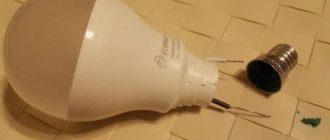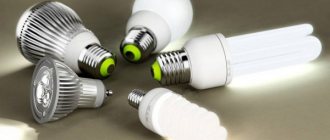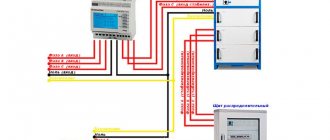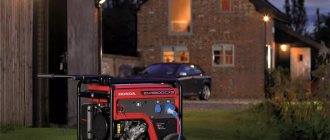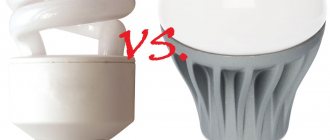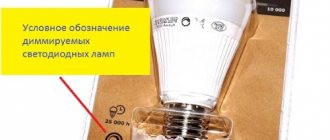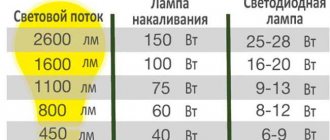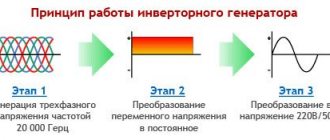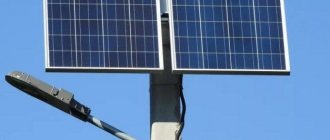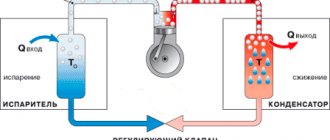Unfortunately, LED lamps were not as long-lived as expected. And even though each lamp has a warranty for a period of one to five years, problems often arise with the exchange of failed lamps if the lamps were purchased in online stores, in markets or in hardware stores near home.
In Auchan, Leroy Merlin, Castorama and other large stores there are no problems with exchange, and even if the receipt is lost, it can be restored by giving the approximate date of purchase.
The second and third reasons are fairly low prices and a large assortment compared to markets and small shops.
I bought 120 lamps from the Leroy Merlin store and tested them to understand which lamps I could buy there and which ones I shouldn’t.
Leroy now sells about 130 types of LED lamps from eight brands: more than 50 models of lamps from its own brand Lexman (these lamps are guaranteed for five years), about 30 models of Osram (2-year warranty), several models of lamps from Philips, Uniel, Wolta , IEK, Electrostandard, Bellight (mostly 2 year warranty).
First, let's define the criteria for choosing good lamps:
- there should be no light pulsation (pulsation coefficient should not exceed 5%);
- color rendering index (CRI, Ra) must be more than 80;
- there must be a driver with stabilization, allowing them to operate in a wide range of supply voltage without fluctuations in brightness;
- luminous flux and other parameters must correspond to those stated.
Measuring instruments:
- luminous flux – two-meter integrating sphere and Instrument Systems spectrometer;
- lighting angle and consumption characteristics – Viso Light Spion;
- power consumption – Robiton PM-2;
- color rendering index, color temperature and ripple – Uprtek MK350D;
- the minimum operating voltage at which the luminous flux decreased by no more than 10% of the nominal - Lamptest-1, Stihl Instab 500 stabilizer, Suntek TDGC2-0.5 LATR and Aneng AN8001 precision multimeter.
For convenience, I divided all the lamps into categories, in each of which they, in turn, are divided by base and color temperature. In each subcategory, lamps are sorted by declared luminous flux.
What types of LED lamps are there?
To correctly select such lamps, it is necessary, first of all, to decide on some important parameters, such as:
- what kind of light source they will serve (main, additional);
- what is the lighting area;
- what shade of light should be;
- what is the purpose of the room?
Note that lamps for household use can be based on the type of base
- E14/E27 . These connection options are the most common. The number in the designation says what the diameter of the spiral is (mm), and the letter E indicates that Edison invented them;
- G9 . They differ in that the connection occurs through a two-pin connector (with a 9 mm distance between the pins).
LED lamps can also be classified according to their shape :
- traditional (represent candles, pears or flasks);
- corn - a diode circuit is located around the perimeter of the cylinder.
Finally, you can classify by type of control and sensors :
- models with motion/light sensor;
- rechargeable (powered by AA batteries or, as an option, a battery);
- with remote control;
- smart models (such lamps are controlled via wi-fi; a special application is used to adjust the color and brightness of the lighting).
Which company is better?
The best manufacturers of high-quality LED light sources:
- Nichia is a Japanese company specializing in the development of diodes and additional components. It is one of the oldest in its industry. It has a reputation as a manufacturer of top-class products and is considered a leader in the production of ultra-bright devices.
- Osram is a German brand founded more than a hundred years ago. It is associated with another well-known company - Siemens, and owns almost fifty production facilities around the world.
- Cree is an American company that originally produced chips that were used to make mobile phones and car dashboards. Today, a well-established company produces LEDs for various purposes in a full cycle.
- Philips is a well-known corporation with factories in 60 countries, which is famous for its investments in innovative developments. It has an annual turnover of millions of euros and high rates of growth in production volumes.
In addition to the above, popular models of diode lighting devices are produced by Russian brands - ERA, Gauss, Navigator, Ecola, as well as Chinese and VOLPE.
If you have experience using the LED lamps described in the rating, or a more interesting model, tell us about it in the comments.
Advantages and disadvantages
LED lighting, like any other technology, has its own advantages and disadvantages that you should definitely know about.
pros
- economical energy consumption;
- can be connected to a dimming system;
- long service life (from 3 to 8 years);
- environmental friendliness.
Minuses
- the parameters indicated on the packaging may not match;
- quite high cost;
- low quality of parts (especially diodes).
Design and features of diodes
Externally, an LED light bulb is not much different from its counterparts - structurally, it also consists of a glass bulb and a base. But the internal content of the soffit has changed dramatically. The role of the illuminator is not performed by a tungsten filament, but by a light emitting diode (LED).
To light an LED, a low voltage is required, so the device is supplemented with a driver - an electronic circuit that converts alternating current.
Each element performs a specific function:
- the working pair of radiator/aluminum board is responsible for cooling and removes heat from the LEDs and power supply;
- The driver, in addition to stabilizing the current, protects the lamp from short circuits and minimizes pulsation of the light flux;
- the system and the number of LEDs determines the power of the light bulb and the angle of illumination;
- The diffuser ensures uniform beam delivery.
The quality of component parts determines the lighting parameters, the durability of LED products and the safety of their operation for human health.
The standard design of a diode lamp, in addition to the diffuser bulb, LED system and base, includes a driver, a radiator and an aluminum printed circuit board
The increased interest in diodes is due to a number of significant advantages over incandescent lamps:
- efficiency - electricity consumption is reduced by 8-10 times;
- durability – service life increased by 20-40 times;
- maintaining brightness during voltage surges;
- slight heating of the bulb - there is no risk of getting burned by the LED lamp.
In a lamp of limited power, you can install a brighter diode than an outdated analogue with an incandescent coil.
LEDs also outperform fluorescent lamps in the following parameters: efficiency, safety and glow quality. The spectrum of LED illuminators is closer to daylight
Diode light bulbs still have disadvantages. Main disadvantages: high price and availability of low quality products for sale. In addition, the ability to change brightness is limited - dimming is provided only in more expensive models.
TOP 5 LED lamps with E27 base (analogous to “weaving”)
The popularity of this power is explained by the fact that it makes it possible to minimally illuminate rooms up to 15 square meters. Let's take a look at the analogues of “hundreds” (100 W incandescent lamps), which are considered the best according to buyers.
No5. Bellight E27 10 W
At Leroy Merlin you can find inexpensive options, including their own production. These bulbs, made of frosted glass, have a white, cool light. The color temperature is 4000 K, the voltage is from 220 V to 230 V. The shape is pear, the luminous flux is 840 Lumens.
pros
- the price is quite affordable;
- the lights don't blink.
Minuses
- no serious deficiencies were identified.
No4. Navigator NLL-A60 6500K
This model is also pear-shaped and made of white frosted glass. Gives cool light, optimal for everyday use. When consuming 220-230 V, the device produces a luminous flux of 850 Lm. The color temperature reaches 6500 K, the light beam has an angle of 270 degrees.
pros
- saves electrical energy, and therefore money;
- work long enough (30 thousand hours).
Minuses
- no significant deficiencies were identified.
No3. Feron E27-E40 LED
The service life of these diode lamps is long - up to 30 thousand hours. They provide white, cool light that helps you concentrate on work (your eyes don't get tired). An excellent option for a spacious room, kitchen or dining room. The color flux in this case is 4700 lm, and the color temperature is 6400 K. Pear-shaped, operates on a 220-230 V network.
pros
- immediately bright light, without “overclocking”;
- there are adapters for different types of base;
- long service life;
- the light is very bright.
Minuses
- quite high cost.
No2. LED E27-E40
Powerful and bright cold glow is perfect for spacious classrooms and halls. The shape of the lamp is futuristic (pear with corners), and a good cooling system is provided. The voltage is standard, the luminous flux reaches 4700 lm. As for the color temperature, it is 6400 K.
pros
- original design;
- long service life;
- high power.
Minuses
- There is no possibility to connect a dimmer.
No1. Gauss LED 12W
According to the manufacturer, such lamps can last up to 35 years (warranty period is 3 years), which indicates the high quality of the products. The shape of the lamp is pear-shaped, with the cooling system taking up most of the structure. With a standard voltage of 220-230 W, the lamps have a power of 12 W, a luminous flux of 1220 lm and a color temperature of 2700 K. They have a height of 20 cm.
pros
- the glow is bright and warm;
- electricity is consumed economically;
- long service life.
Minuses
- no significant deficiencies were identified.
Errors in selection
- Trust in an unverified manufacturer. Fly-by-night companies, which today have one name and tomorrow another, do not particularly care about their own reputation, and therefore quite calmly sell low-quality products, luring buyers with a low price. It should be remembered that in order to reduce costs, the manufacturer saves, first of all, on consumables, which will invariably affect the operational properties of the device. Some manufacturers, trying to reduce heat generation and increase light output, but at the same time save on parts partially or completely, ignore the need to smooth out current ripples. As a result, such products emit flicker invisible to the naked eye, which, although not noticeable, is dangerous for vision. And due to the lack of heat-removing elements, overheating and, accordingly, damage to the diodes is possible, especially in closed lampshades and lampshades.
- Product warranty. In LED, the quality of diodes is important, on which functionality, durability and operating conditions depend. And if one chip fails, the product will immediately stop working. There are few manufacturers of high-quality LED lamps, and they all provide a guarantee for their products.
- Product information. The packaging must contain a description of the product. The manufacturer must indicate the following characteristics: light shade (color temperature), power, energy efficiency class, service life, performance.
Advantages and disadvantages
Advantages of LED devices:
- They have a longer service life compared to fluorescent or incandescent lamps;
- Suitable for household, office, street and industrial lighting;
- Effectively save energy;
- Easy to install with your own hands;
- Strong and durable;
- Environmentally friendly, made from non-toxic materials, do not contain or emit hazardous substances;
- Do not require complex disposal, unlike fluorescent lamps;
- Provide rich, bright light even at low mains voltage;
- Do not create harmful radiation and do not harm furniture, as well as decorative items and interior elements;
- The variety of sizes and shapes of modern LEDs makes it possible to choose the necessary lighting product for any chandelier or sconce. A table lamp can also be equipped with LED, even if the device belongs to the rare category.
Flaws:
- High cost of the product;
- Most LED products shine in one direction.
Main technical characteristics
| Number | Characteristics | Recommendations |
| 1 | Flask | The cylindrical shape, as well as the "ball", "corn" and "pear" shapes are multi-purpose, suitable for overhead lighting. For installation in lamps and sconces, it is better to choose “candle”, “twisted candle”, “candle in the wind”. “Soffit” and “tablet” are well suited for creating spot lighting. |
| 2 | Power | From 3 to 5 W - low-power products, From 6 to 11 W - medium-power devices, From 12 to 22 W - high-power LEDs. For example, a 12-14 W LED lamp will create the same illumination as a conventional 100-watt incandescent light bulb. |
| 3 | Base type | The most common bases are E-27 and E-14. |
| 4 | Colorful temperature | 3000 K (warm white) and 4000 K (neutral white) are the most universal indicators. |
| 5 | Voltage | When purchasing, you should choose a product with the largest voltage range. |
| 6 | Color rendition | According to standards, in residential areas it is best to use products with an index of at least 80 CRI/Ra. |
| 7 | Scattering angle | Depending on the design features, the dispersion angle can vary from 30 to 360 degrees. |
| 8 | Ripple | According to the recommendations of experts, you should choose devices with a pulsation interval no higher than 15%. |
| 9 | Maintainability | In some cases, LEDs stop working due to poor contact. The problem can be corrected, but you should only attempt to repair the device yourself after familiarizing yourself with the rules for working with electrical appliances, since the electrical circuits of LED lamps are connected to the mains phase and it is important to be extremely careful. |
| 10 | What is the price | The price of diode light sources varies depending on the characteristics and manufacturer. The average price for a standard LED product is 180 rubles, a “smart lamp” will cost 1,250 rubles. |
TOP 4 lamps with E14 socket (analogous to “weave”)
E-14 is a wide base, which is also very popular and is suitable for most lighting fixtures in the house.
No4. Feron ELC73
Good energy-saving products in the shape of a candle. The light is cold and white (color temperature - 4000 K), visually it is almost no different from the indicators of the classic “weaving”. At a voltage of 220-230 V, the power value of the product is 11 W. If we talk about the luminous flux, then in this case it is 540 Lm.
pros
- very affordable price (from 13 rubles);
- good power and other characteristics.
Minuses
- service life is relatively short (up to 8 thousand hours).
No3. Xflash XF-E14-TC-P
According to the manufacturer, such a lamp can last up to 50 thousand hours. The light is cold and strong, the luminous flux is abundant, and therefore the room will be illuminated in the same way as a 100 W light bulb. The model has a power of 10 W and a color temperature of 4090 K. It is cylindrical in shape and has a height of 11.6 cm.
pros
- dimmable lamps available;
- long service life.
Minuses
- ripple value – 1.3%.
No2. ASD LED LED-SHAR-STD
A spherical lamp that provides a cool glow. Can last 30 thousand hours. Uses 10 times less electricity than a hundred square meters. With a standard voltage of 220-230 V, the product has a power of 10 W. The color flux is only 400 lm, and the color temperature is 4000 K.
pros
- low price;
- good power;
- impressive service life.
Minuses
- no serious deficiencies were identified.
No1. Foton Lighting FL-LED-R50 ECO 9W
This model has high color (6400 K), which provides bright light as close to daylight as possible. The lamp can be installed in both open and closed lighting fixtures. It has a power of 8 W and a luminous flux of 720 lm. The shape is spherical, height is only 5 cm.
pros
- high quality at a good price;
- long service life (30 thousand hours).
Minuses
- Dimmer connection is not provided.
Light sources - what are they?
There are the following types of artificial lighting: incandescent, fluorescent, halogen, and LED.
Incandescent lamp (LN)
A classic and familiar light source to every person, which was invented by the American Thomas Edison more than a hundred years ago. It is a transparent flask made of heat-resistant glass, inside of which there are electrodes and a filament body. The air from the flask was partially removed and replaced with an inert gas. The bulb is connected to the base body, which has a thread for screwing into the cartridge. At the bottom of the base there is a contact with an electrode attached to it. Depending on the functional features, the design of a standard lamp can be modified or supplemented with related elements.
Such products are used in both residential and non-residential premises. They emit pleasant light of warm shades, which does not irritate the eyes even after a long stay in the room. They are budget-friendly and therefore in demand, but they consume a lot of electricity and get very hot during operation. The service life is 1,000 hours and largely depends on the conditions in which the device is used. LNs are sensitive to voltage changes, and therefore they have to be replaced regularly due to combustion.
Luminescent
There are two types - low and high pressure. The former are used in residential premises, the latter are intended for street lighting. The service life of the device is 5 years, but provided that it is turned on no more than five times a day.
Originally, a compact fluorescent lamp (CFL), also known as an energy-saving lamp, was a long cylindrical tube sealed on both sides, containing mercury vapor inside. At this stage, manufacturers have improved the design and are producing lamps of various shapes and sizes. The cylindrical design has remained the classic solution for this type of lighting device, but the U-shape is also popular.
Luminescent sources consume five times less electricity than LNs, so they are often installed to illuminate large rooms, for example, auditoriums, warehouses, production facilities, etc.
Due to the fact that the bulb of the device during operation heats up no higher than 500C, CFLs can be installed in areas where fire safety is especially important.
But there are also negative aspects - low unit power, a decrease in the saturation of the luminous flux towards the end of its service life, sensitivity to ambient temperature, specific sound and pulsation of light during operation, which can negatively affect the vision of people present. Also, if the voltage drops by more than 10%, the fluorescent lamp simply will not light up.
Complicates the operation and disposal of such devices. Due to the presence of mercury, it is impossible to simply throw an old installation into the trash, since if the seal of the flask is damaged, the toxic substance contained inside will enter the air, and this threatens both human health and the environment. It is necessary to find a special company specializing in this profile and hand over the lamp to them.
Halogen
A more advanced version of LN. The main difference is that the halogen bulb is filled with buffer gas vapor, due to which the operating temperature of the spiral element is several times higher and, accordingly, the duration of use of the lighting product is significantly extended. According to manufacturers, for halogen lamps it ranges from 2000 to 4000 hours. At the same time, the devices have the highest light transmission rates - almost 100%.
On the market, halogens are represented by a wide range of models in various configurations. Such lamps can be partly built into furniture or mounted in the ceiling to create a spot lighting system - they provide a rich, dense light flux despite their modest size.
The main disadvantage is its vulnerability to damage and sensitivity to frequent switching on and off. It is these two points that largely contribute to the rapid failure of the lamp.
LED
An LED lamp or LED (Light emitting diode), as it is also called, operates on the basis of LEDs, which are connected into one structure equipped with a power supply. LED is an environmentally friendly light source. There are both full-fledged devices - LED lamps, and individual elements - replaceable LED bulbs.
Lamps
They can be roughly divided into the following categories:
- For street and architectural illumination - they are a sealed housing insulated from moisture made of materials with high thermal conductivity;
- For production and office needs - they stably transmit light flux, and are also equipped with a high-strength housing, for example, made of polycarbonate;
- For domestic purposes - they have low productivity, but must meet many requirements - for the quality of lighting, fire and electrical safety, and appearance.
A separate category should include a “smart lamp”, the operating parameters of which (color, brightness, on and off times, etc.) are set and adjusted using a smartphone.
Models with colored light-emitting diodes are used for decorative purposes, as well as for illuminating individual elements - subway signs, exhibits in museums, paintings at exhibitions, and so on.
Lamps
At the moment, diode products are produced for all existing types of bases; they also have a power of up to 40 watts and are designed for installation in home lighting devices - wall and floor lamps.
Structurally, a replaceable diode light source consists of a diffuser in the form of a hemisphere (bulb), chips with diodes (of which there can be up to a couple of dozen depending on the power of the device), a printed circuit board, a radiator (which is necessary for heat removal), a driver (which acts as a stabilizer voltage and smoothing out ripple) and a base, the base of which is insulated with polymers to protect against electric breakdown.
LED lighting sources consume little electricity, but at the same time create a bright and rich luminous flux. They have a service life of 30-50 thousand hours, since their working elements rarely burn out.
Despite the huge number of advantages, the main disadvantage of LED devices is their high price, which, however, is gradually decreasing. In addition, the amount spent will be recouped due to reduced energy costs.
Next, we will consider the main selection criteria that will help you understand how to choose a good LED lamp.
TOP 4 models with E27 socket (to replace 60 W lamps)
We are talking here only about the power of the luminous flux, because in other respects incandescent lamps are significantly inferior. Thus, diode lamps consume three times less electricity, do not heat the air around them and do not heat themselves, and they do not blink.
No4. Philips LED A60-8w-865-E27
An excellent option for budget lighting of small rooms and corridors. With a temperature of 6500 K and a power of 8 W, the model contributes to significant energy savings. The luminous flux is 806 lm, the voltage is from 220 V to 240 V. The service life reaches 40 thousand hours.
pros
- affordable price;
- absence of IR and UV rays.
Minuses
- There is no possibility to connect a dimmer.
No3. Gauss Led 7W
One of the best medium power bulbs, providing a white and warm glow. The base has a diameter of 14 mm, the voltage can vary from 150 V to 365 V, and the color temperature is 2700 K. With a power of 7 W, the light bulb can last 35 thousand hours. The shape is soffit.
pros
- you can connect a dimmer;
- There are varieties of the model in the form of a candle and having a warm color temperature.
Minuses
- no significant deficiencies were identified.
No2. Osram Duo Click CLA60 6.3W/827
The dispersion angle of the warm glow of 2700 K is in this case 200 degrees. The shape of the product is a traditional glass pear. The voltage can vary from 220V to 240V and the power is 6.7W. Luminous flux is only 610 lm.
pros
- relatively good service life (15 thousand hours);
- model protection degree - IP40;
- low price.
Minuses
- There are no significant shortcomings.
No1. Philips 806 Lumen 2700K
The product gives a warm, soothing light, ideal for the bedroom (helps create an intimate environment). The filament threads in the composition provide a rather attractive design. With a standard voltage of 220-240 V, the product has a power of 8 W. The shape of the model is a ball. The luminous flux is 806 lm, while the color temperature reaches 2700 K. The lamp will last up to 15 thousand hours.
pros
- Compatible with switches that provide brightness adjustment.
Minuses
- no serious deficiencies were identified.
Glow color
LED lamps, unlike incandescent lamps, can have different glow colors. Therefore, it is important to decide which color is suitable and comfortable for you.
Warm or cold. If everything is more or less clear with warm light, it corresponds to a color temperature from 2700 to 3000 Kelvin. This is very similar to the lighting from a regular incandescent light bulb. More details
With cold colors everything is more complicated. There can be two types of cold flowers:
- natural or neutral white 4000-4500 kelvin
- daytime from 6000 to 6500 kelvin
The higher the color temperature, the more lumens the LED produces and, accordingly, the brighter the lamp shines at the same power.
The difference can reach 10-15%. Therefore, it seems to be more profitable to buy fluorescent lamps. You get more light for the same money.
However, can you rest and relax at home under the bluish, cold light that resembles the lighting in an operating room? Most likely no.
It just so happens that people find warm light more pleasant, such as from incandescent lamps or a fireplace. But at the same power, it is the least bright.
Therefore, the most popular is neutral or natural white 4000 - 4500K.
TOP 4 LEDs with E27 base (to replace 200 W lamps)
Having different shapes, such lamps have the same lighting power. Installed where bright light is required or in large rooms.
No4. OSRAM HQL LED 3000
The body is elongated and completely covered with diodes (the lamp looks like an ear of corn). High power, service life reaches 32 thousand hours. The model can be used for outdoor lighting, as it is resistant to temperature changes. High brightness combined with neutral light. The power is 27 W, the luminous flux is 3000 lm, and the color temperature reaches 4000 K.
pros
- resistance to temperature changes (from -20 to +60 degrees);
- a large area is illuminated;
- excellent power of the product.
Minuses
- quite high price.
No3. Philips Led 27 W 6500 K
The model emits a cool glow that is close to natural. An excellent option for the role of the main light source. With a luminous flux of 3000 lm and a power of 27 W, such a lamp can last 15 thousand hours. Color temperature is 6500 K. Pear-shaped.
pros
- economical consumption;
- no flicker;
- affordable price.
Minuses
- there is no possibility of connecting a dimmer;
- There is no way to adjust the brightness.
No2. Gauss A67 6500 K
The product provides white, soft and visually pleasing light; An excellent option for common areas. The permissible voltage is from 180 V to 220 V, the power value reaches 25 W. Having a luminous flux of 2150 lm and a color temperature of 6500 K, the lamp can last up to 25 thousand hours.
pros
- no flicker;
- good service life;
- An excellent option for common areas.
Minuses
- no serious deficiencies were identified.
No1. Navigator NLL-A70
This model has a warm and white light, the light beam dispersion angle is 230 degrees. An excellent option, for example, for a bedroom. The permissible voltage is from 180 V to 220 V, while the power is 20 W. The luminous flux is 1700 lm, and the color temperature is 4000 K. The shape is pear, height is 15.2 cm.
pros
- long service life (40 thousand hours);
- good characteristics, including power.
Minuses
- The lamp is not suitable if you need to smoothly adjust the brightness of the lighting.
Comparison of LED and fluorescent lamps
Let's compare which lamp is better: LED or energy-saving fluorescent. Fluorescent lamps are characterized by poor environmental friendliness due to the presence of mercury vapor and ultraviolet radiation, which is not completely absorbed by the phosphor coating. When compared, they are inferior to LED ones in all main parameters. For example, the same luminous flux of 450 lumens is produced by a 15 W fluorescent lamp and its 4 W LED counterpart. The difference is obvious.
To date, fluorescent lighting devices have no obvious advantages. Let's look at the disadvantages:
- relatively short service life;
- low energy efficiency;
- rapid loss of up to 20-30% of glow brightness;
- inertia in reaching operating mode;
- 50Hz flicker;
- 360 degree light dispersion;
- harmful glow in the UV range;
- poor environmental friendliness;
- special disposal regulations.
Consumers consider their higher cost to be the only disadvantage of LED lamps. But there is a whole list of advantages:
- leadership in light output (150-200 Lm/W from different manufacturers);
- minimum electricity consumption;
- durability (80-100 thousand hours);
- environmentally friendly;
- any colors and shades of light;
- models with different dispersion angles;
- instant output of full brightness;
- no problems with disposal;
- no dangerous ultraviolet radiation.
| Parameter | Incandescent lamp | Luminescent | LED lamp |
| Price | low | average | average |
| Efficiency (efficiency) | low | average | high |
| Usage costs | high | average | low |
| Service life (hours) | up to 1,000 | up to 10,000 | above 30,000 |
| Flicker | minimum | high | No |
| Mercury content | No | high | No |
| Entering operating mode | 1 sec | 2-5 minutes | straightaway |
| Changes in voltage, temperature, vibration | unstable | unstable | stable |
As production technologies develop and production volumes of LED light sources increase, the price of products decreases and their quality increases. The day is not far when ice lamps will cost less than incandescent light bulbs.
TOP 3 LED models E27 (to replace 150 W lamps)
Such lamps are optimal for lighting rooms up to 25 square meters. m.
No3. Osram SST CLA150 20.3 W/827 E27 FR Dim
These LED ceiling lights are a great option for your home. They provide warm and cozy light without hesitation or flickering. The flask is made of frosted glass. The light beam scattering angle is 200 degrees. With a luminous flux of 2452 lm and a temperature of 2700 K, the power of the product is 21 W.
pros
- you can connect a dimmer;
- The output indicators correspond to the declared ones.
Minuses
- no significant deficiencies were identified.
No2. Nanosvet E27 2700K
The lamp provides light that is pleasant and comfortable for the eyes without yellowness. It has a voltage of 220 V and a power of 18 W. The shape is cylindrical, the color temperature is 2700 K. The model can last 15 thousand hours.
pros
- no flicker;
- can be used with switches that have backlighting.
Minuses
- not the lowest price.
No1. OSRAM LS CLA150
A pear-shaped lamp with bright warm light, an excellent option for large areas. At standard voltage, its power is 20.3 W, and the luminous flux is 2452 lm. The color temperature indicator is 2700 K. Lasts up to 15 thousand hours.
pros
- no blinking;
- the product begins to illuminate without “overclocking,” that is, immediately.
Minuses
- no serious deficiencies were found.
How to choose a good LED light bulb?
Choosing the right LED lamp will provide your home or apartment with comfortable light. Poorly selected products have a negative impact on human vision. Consider the following selection criteria:
- Luminous flux and power. When replacing a standard lamp with a diode lamp, you need to determine the power value. It is calculated by the formula - the power of a regular lamp must be divided by 8 or 10, depending on the manufacturer. The higher the luminous flux value, the wider the room will be illuminated. The value is measured in lumens and written on the packaging box.
- Supply voltage. LED lamps can operate on either 220 V or 110 V. If there are power surges in the house, it is better to choose lighting fixtures with a wide operating voltage range. The value is marked on the packaging box, for example - 165/240 V/50Hz.
- Color spectrum. Depending on the spectrum, the room will be illuminated in different shades of white. The color spectrum scale of LED lamps takes values from 2700K to 7000K. The lower this number, the warmer the light output will be.
Cold tones correspond to lamps with a color temperature of 5000-7000K.
- Number of LEDs in the lamp. Diodes do not burn out like a filament in an incandescent lamp, but over time they begin to fade. The greater the number of diodes in the lamp, the longer it will illuminate the room.
- Base. LED lamps have 2 main types of sockets: pin (G) and threaded (E). The first option is used for screwing into a standard socket, and the second is used for spot lighting of a room. Also distinguished: soffit bases (S), representing the illumination of mirrors, sealed contacts (R) for small devices, focusing (P), used to focus spotlights on an area.
Rating of the best LED lamps. LED lamps represent modern environmental light sources that do not pose a threat to humans. Our rating contains the best models that consume less electricity and work longer.
Conclusions and useful video on the topic
Detailed instructions on determining a high-quality diode light bulb, checking for flicker:
Testing products of popular brands. Advantages and disadvantages of lamps produced by Philips, Canyon and Osram:
Replacing old incandescent light bulbs with technically advanced LED lighting has many positive aspects. In order for LEDs to realize their maximum efficiency and fully recoup the money spent, you should wisely approach the issue of their choice - evaluate a number of parameters and check their performance.
Tell us about how you selected LED light bulbs for installation in your home/dacha/office. Share the criteria that helped you decide on a purchase. Please leave comments, ask questions and post photos related to the topic of the article in the block below.
